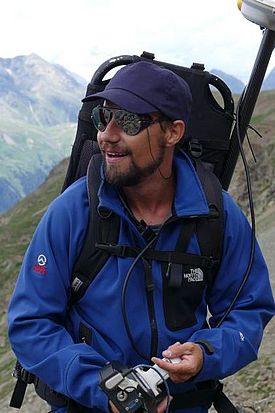Jacopo Boaga

Dipartimento di Geoscienza
Università di Padova
Italy
Fellowship Period: 07.2019-09.2019
Research interests and main activities
Jacopo Boaga is currently contract assistant Professor of Applied Geophysics at the Department of Geosciences of the University of Padua, Italy. He received the Geological Sciences degree in 2004 at the University of Padua. In 2008 he received the PhD degree in Earth Science (Geophysics address) from the University of Padua in collaboration with the University of Triest, He worked as Post-Dc at the Department of Architectural Construction of the University IUAV of Venice, Italy. He was involved as participant in a number of national and international (France, Germany, Swiss) projects financed by several institutions (European Project, National Foundation, etc). He participated to several national and international post-doc courses in applied geophysic. He won the national Thesis award for geophysics 'Giampaolo Pialli' in 2004 and the best Italian applied geophysics work ‘L.Cernobori’ in 2014. He is member of American Geophysical Union and European Association of Geoscientists and Engineers. He was consultant for private engineering company (Thetis spa, Innova srl) and from 2006 he worked as professional consultant in the seismic analysis for several civil engineering projects in North Italy. He participated to several national and international conferences. His research interests concern mainly natural hazard scenarios, electro-magnetic geophysical survey, hydrogeophysics, controlled source and passive shear waves measurements. He has published more than 50 papers in international refereed journals and conference proceedings.
Activities within WSL Fellowship
The project intended to test the use of Frequency Domain Electro-Magneometer (FDEM) to characterize the permafrost area monitored by the WSL Institut für Schnee- und Lawinen forschung (SLF). We wanted to test such peculiar geophysical measurements on periglacial environment. In particular we want to test the use of multi-coils frequency domain electro- magnetometer (EM) to study the permafrost active layer in several test sites of the canton of Graubünden. The aim of the study is related to the problematic permafrost warm and thaw that is related to slope instability in alpine environment. We intend to compare the geophysical result measurements in complex mountain terrain to the temperature borehole data collected by the SLF, in order to test the use of FDEM contact-less instrumentation to map active layer consistency and thickness. Borehole information and previous studies conducted by the Permafrost group will furnish the necessary calibration for the methodology. The FDEM data will be compared also with Electrical resistivity data collected in the same time, in order to compare contact-less and ground contact methods. The great advantage of FDEM method consists in the easy logistic and quicker acquisition protocol respect to other geophysical methods. FDEM method can be in fact a relevant tool to extend the punctual information of the borehole to wider area of investigation. Furthermore, the possibility to extend the FDEM method adopting airborne acquisition represents a very promising future step to increase the area of interest.